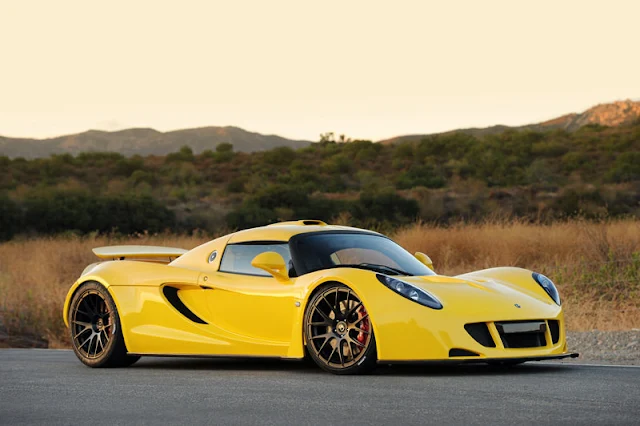Hennessey Venom GT
 |
| image is taken from topspeed.com |
The domestic hypercar from Hennessey does a lot to stay up with the tough competition. Take a peek at how Hennessey does that in the following.
Supercars were once considered the pinnacle of the automotive industry. They were the most powerful and quick vehicles that could be built. Despite their continued existence, supercars are no longer at the top of the automobile food chain. With the introduction of hyper vehicles, performance levels have reached entirely new heights.
Historically, only the most prominent brands have been allowed to sell cars in this category. These include names like Ferrari, Bugatti, McLaren, and others. There is a smaller pool of manufacturers eager to enter this market because not every company has the funds or desire to do this.
But not all smaller producers have been put off by this. Hennessey is a good example. The Texas-based business first gained notoriety by modifying first-generation Dodge Vipers to provide even more power. Nowadays, they alter a wide range of performance cars, including trucks and sedans.
However, that hasn't stopped them from trying their hand at bespoke vehicles as well. The majority of their work has been in the industry of tuning already fast cars. The Venom GT steps in at this point. It was Hennessey's initial foray into the hypercar industry. The Hennessey Venom GT caused a stir when it debuted as a hypercar, and for good reason.
Speed Greater Than The Fastest
Being named the fastest production car ever constructed, which was exactly what Hennessey wanted, is one of the most prominent reasons the Venom GT attracted notice. Given the competition, Hennessey faced, this was a remarkable achievement. Consider the brand Bugatti, which is associated with extremely fast driving.
The only goals they, have been to drive as quickly and luxuriously as they can while doing so. This makes it even more astonishing that Hennessey was able to create a car that at the time dethroned Bugatti as the quickest production car.
Engine and Performance
The Hennessey Venom GT is capable of 270 miles per hour in terms of speed. This is derived from a 6.2-liter LS9 V8 that Hennessey twin-turbocharged and made other changes to after it was borrowed from General Motors. The Venom also possessed a borrowed vehicle's skeleton in addition to its borrowed powerplant.
It is mostly based on the Lotus Elise/Exige. Given that the Lotus was already a lightweight, well-handling mid-engine sports car, this was a natural choice for the Venom GT. To fit the larger engine behind the seats, Hennessey took the Lotus and lengthened its wheelbase.
High Performance Costs A Lot of Money
Despite being effectively the underdog in the hypercar market, the Venom GT's price did not at all reflect this. The Hennessey Venom GT had a total production run of just 29 cars, costing roughly $950,000 when it was brand new.
This was a good deal compared to the competition at the time, especially because the Bugatti Veyron Super Sport had an MSRP of more than $2 million. Similar to most hypercars, those in excellent condition tend to increase in value. You may locate examples of used Venom GTs for sale right now that cost less than $1.3 million.
The exclusivity of the Venom GT helps to justify this price in part. The GT's production was capped at just 29 units, as was previously mentioned. Each of these few cars, like the others, was largely handcrafted by a talented group at Hennessey.
Hennessey does not operate out of a huge production plant; instead, it is a small manufacturer in Texas. Whatever the case, each Venom GT has a high level of craftsmanship and customized features that, together with its speed, justify its over $1 million price tag.
It is hardly surprising that Hennessey approaches the Venom GT with a "bigger is better" mentality given that the company is based in Texas. Hennessey is, in many respects, the epitome of Texas in the auto industry.
A claim like this has more than enough support when a very inconspicuous sports car, like a Lotus Exige, is converted into an insanely fast hypercar. Evidently, the world didn't need 29 Venom GTs because Hennessey is currently developing the F5, which it hopes will reclaim the title of the fastest production car. Hennessey is without a doubt an expert when it comes to speed if the Venom GT is anything to go by.



No comments:
Post a Comment